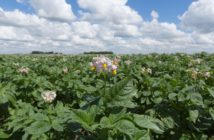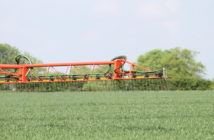OSR growers can improve Blackgrass control with an early season application of carbetamide. That is the advice from David Roberts, herbicide technical specialist for Adama who recommends hitting Blackgrass seedlings when they are small and therefore more susceptible.
“The timeline for establishing oilseed rape often limits the use of cultural techniques to combat Blackgrass, so it is essential to make the correct chemistry choices and to apply at the optimal time,” David Roberts explains.
“A sequenced approach of an early (pre-emergence to 4 true leaves) application of Crawler (600 g/kg carbetamide), followed by propyzamide in November if/when a second flush of grassweeds has emerged will give growers the best chance of keeping ahead of Blackgrass populations. Where blackgrass pressure is extremely high, an effective foliar graminicide should also be considered between the Crawler and propyzamide treatments.”
Crawler kickstarts Blackgrass control by targeting the roots of young, shallow-rooted plants and weakening their resolve to subsequent chemistries: using carbetamide early has been proven to optimise the efficacy of herbicide programmes with propaquizafop and propyzamide.
New herbicide fills the gap between drilling and late season applications
Adama’s new phenmedipham-based herbicide provides an effective, non-metazachlor option for controlling key weeds including Common Chickweed, Red Deadnettle, Mayweed, Groundsel, Small Nettle, Common Field Speedwell and Field Pansy.
Parish (320g/l phenmedipham) can be applied to OSR when the crop has two true leaves and before nine leaves are unfolded. It should be applied to weeds from cotyledon to two true leaves and can be applied at maximum total and individual doses of 1.1 l/ha, with a seven day interval between applications.
Parish is unaffected by soil type, is not an ALS-inhibitor herbicide and, crucially, does not limit following crop options in the event of OSR failure.
“Parish provides an effective solution to hit vigorous young weeds when they are small and susceptible without any potential knock-on risk for following crops,” David Roberts explains. “Parish therefore fills the gap between the August/September drilling window and the application of post-emergence treatments in November.”
More information
More information on the use of herbicides in autumn-sown crops can be found in Adama’s Seedbeds, Slugs and Stewardship Hub: within this Crop Management Knowledge Hub you will find a range of useful information regarding the control of key grassweeds and broadleaved weeds as well as seasonal advice on how to control slug populations and the latest stewardship and environmental protection issues.




